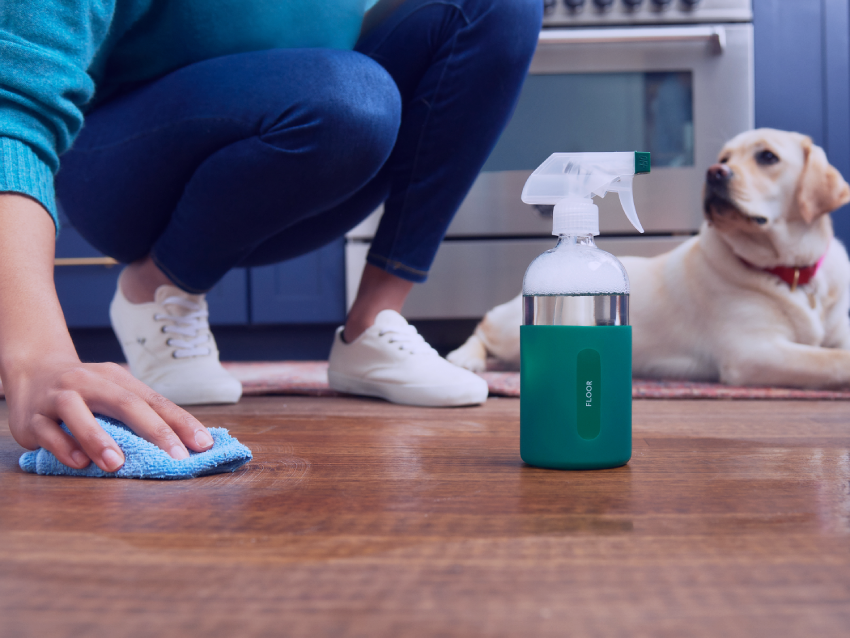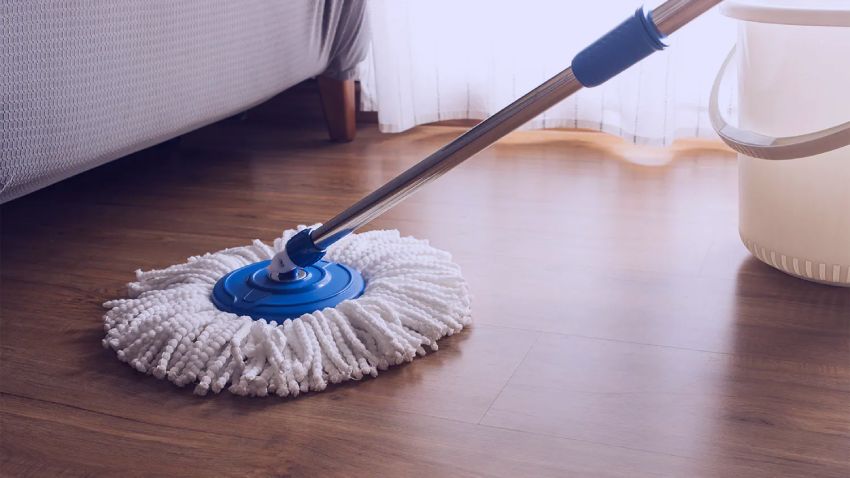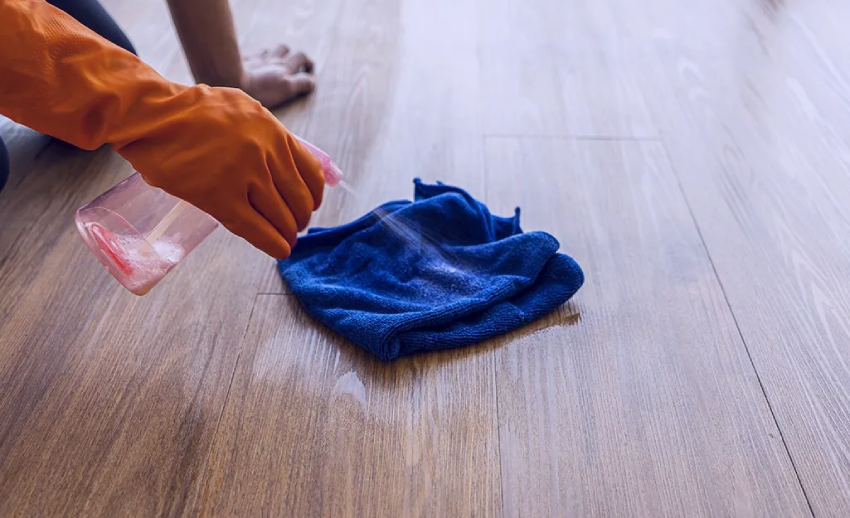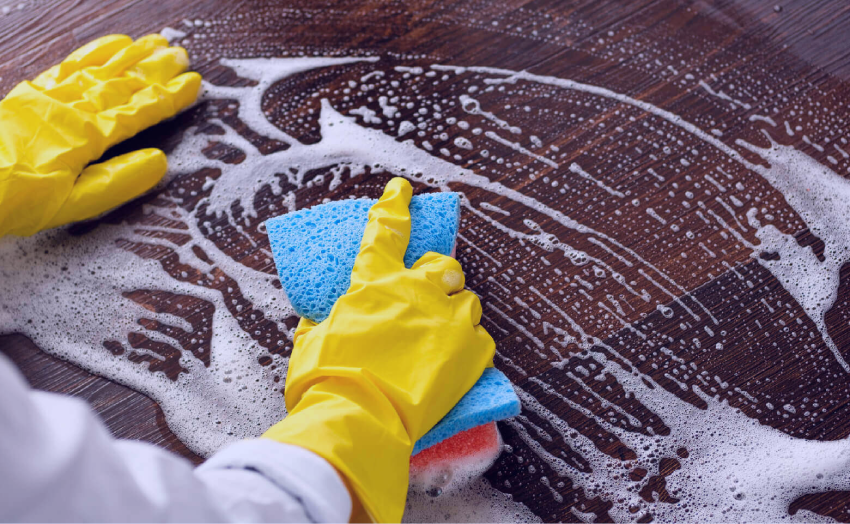How to Clean Vinyl Plank Flooring
Having swept and vacuumed the floor, the next step is to mop the vinyl flooring to give it a glistening shine!
Beyond just spot cleaning, adept vinyl floor upkeep involves regularly sweeping or vacuuming to prevent grit buildup, scheduling routine comprehensive cleanups, and taking precautions to guard against potential damage from furniture. These intentional practices will keep your vinyl plank flooring shining for years to come.
Mopping with Warm Water and Mild Detergent
To properly mop your vinyl plank flooring, you’ll need to utilize a mix of warm water with mild detergent. Doing so will give it a gentle clean with a glossy finish.
- Fill a bucket with warm water. The warmth will help loosen dirt that may have adhered to the floor.
- Incorporate a mild detergent into the water. For most detergents, a small squirt or a couple of tablespoons will suffice.
- Use a soft mop or a microfiber mop to avoid scratching the surface of your vinyl plank flooring.
- Soak the mop into the soapy solution, then wring it out so it’s damp, but not dripping wet.
- Mop the floor, paying particular attention to heavily soiled areas.
- Rinse your mop often and change your water when it becomes too dirty. Never let puddles of water sit on the floor.
- Lastly, rinse the mop in clean water and go over your floors once more to ensure no soap residue remains.
Removing Stubborn or Sticky Stains
Adhesive marks or sticky stains on your vinyl plank flooring are an unwelcome sight. But with the right items and techniques, you can triumph over them effectively.
- Apply a small amount of dish soap diluted in warm water to the troubled area.
- Allow it to sit for a few minutes to loosen the sticky residue.
- Wipe away with a soft, damp cloth ensuring to work gently to protect the finish of your vinyl floor.
- Rinse the area well to remove any leftover soap and pat it dry using a clean, dry towel.
- If the residue is stubborn, use a white, non-abrasive scrub pad along with the soap solution. Rub gently until the stickiness is removed.
Regular Maintenance Tips
For flooring that always looks its best, regular maintenance of your vinyl surface is crucial. This includes not only sweeping and mopping, but also taking steps to prevent grit and dirt buildup.
Who knew maintaining vinyl floors could be this simple? Make it a habit to schedule regular cleaning and, when done correctly, you’ll be amazed how your vinyl flooring maintains its fresh and clean appearance over time. Remember, a well-cared floor is a floor that lasts.
Preventing Dirt and Grit Buildup
Tackling dirt and grit problems starts with taking proactive measures. Place doormats at every entrance to trap outside grime and dirt before they land on your vinyl floor. Taking shoes off at the entrance can also keep abrasive dirt and grit from being tracked in.
Scheduling Regular Cleaning
Keeping your vinyl plank floor at its best comes down to a carefully organized cleaning schedule. Create and schedule a regular cleaning routine to keep your flooring in top shape. Not leaving too much time between cleanings prevents the buildup of dirt and stains, extending the floor’s lifespan.
Remember to incorporate heavy-duty cleaning sessions into your routine as well. Even when you regularly sweep and mop, perform an intensive clean periodically—a strategy key to keeping your vinyl sparkling, fresh, and looking its best.
Protecting the Floors from Furniture
Furniture can be a foe to your vinyl flooring if not handled carefully. Heavy pieces, when dragged or pushed, can cause unsightly scratches or even gouge your beautiful vinyl. Always lift furniture or use protective pads under the legs to mitigate potential damage.
Furniture pads or coasters evenly distribute the weight and prevent any sharp edges from denting the surface.
Don’t underestimate the impact of routinely moving your furniture either! Slight shifts can prevent constant pressure on one spot, helping to avoid any indentations. A little rotation goes a long way in preserving the pristine condition of your vinyl plank flooring.



